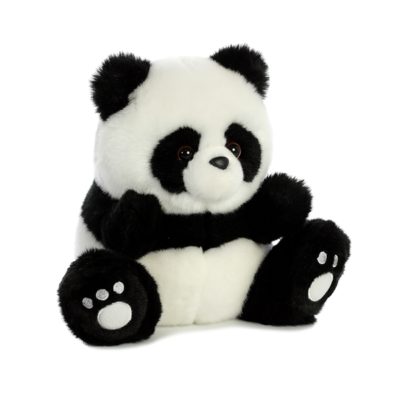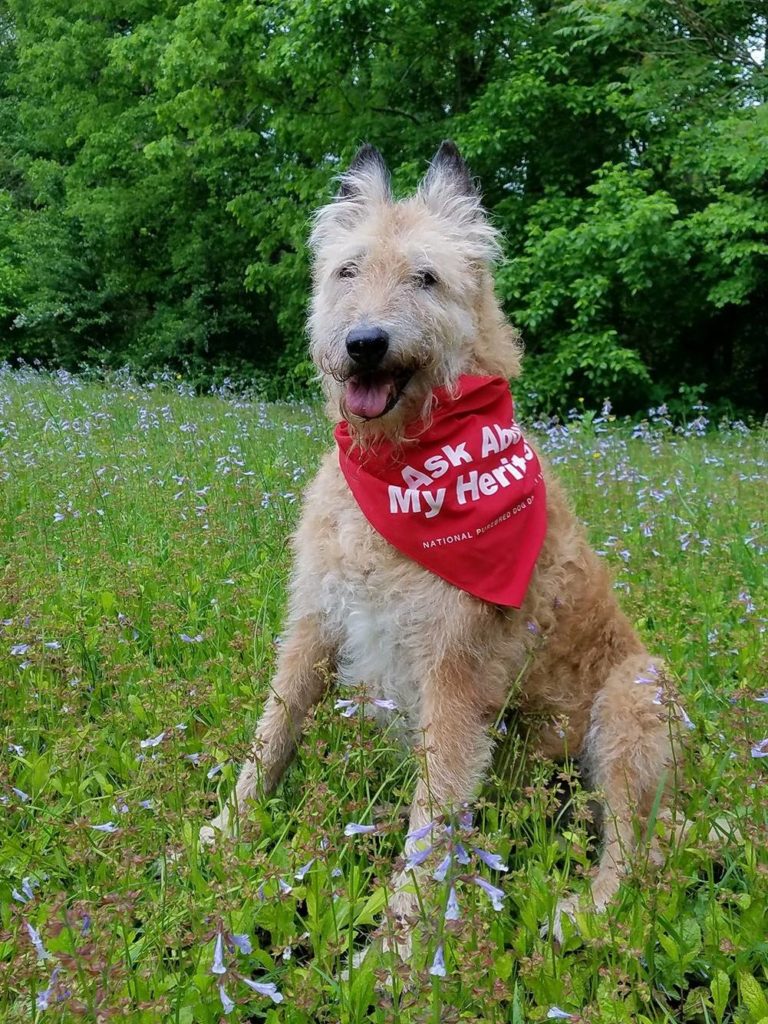

Over the last several years, WWF has been exhibiting 1600 papier-mâché pandas around the world, a nod to the 1596 pandas that China estimated during the third “National Survey” of giant pandas between 1998 and 2002. Here they were, last week in the Publika Shopping Mall in Kuala Lumpur, Malaysia Photograph: Munhoe Chan/Munhoe Chan/Demotix/Corbis
In spite of an inspiring comeback from the very edge brink of extinction, the Panda Bear remains the “poster child” for extinction, a reminder of how close we came to losing a captivating animal.
By comparison, this is what 600 Otterhounds (a conservative estimate of the breed’s global population) looks like in terms of papier-mâché Panda Bears:

Sadly, Otterhounds are not alone in their vulnerability.
In its country of origin, the UK’s Kennel Club registered only 81 Norwich Terriers last year. The number of registered Smooth Collies was 77, Curly Coated Retrievers came in at 70, and only 62 Bloodhounds were officially recorded.
The numbers get worse.
In 2018, a mere 50 Skye Terriers (think Greyfriar’s Bobby) were registered. They were followed by 48 Glen of Imaal Terriers, 51 Irish Red & White Setters ( a breed older than the Irish Setter), and a shocking 34 Sussex Spaniels. Thirty four. While a few of these breeds are faring better across the proverbial pond, it’s alarming that their numbers are so low in the culture that gave birth to so many of them.
It’s not just happening in the UK. The Greenland Sled Dog is in big trouble, and if Dr. Stanley Coren is to be believed, ten breeds account for half of AKC registrations while others are heading into dangerous times.
We are unmoved. Purpose bred dogs can be repurposed. We no longer hunt Otters, but Otterhounds are descended from Bloodhounds and inherited that marvelous nose making them eminently suitable for tracking and trailing work. Glen of Imaal Terriers no longer turn rotisserie spits (thank you!), but because they are a gentler, less excitable breed than most terriers, they can be a great companion for retirees and city dwellers.
The world appreciates what conservationists have done for endangered species, but we think it’s time to include dog breeds as animals needing protection, and to that end, we applaud the preservation breeders who ensure that the next generation of sound, socialized dogs will be around for our future to meet them.

A Belgian Laekenois
Photo by Sharri Hunt

Sobering statistics and an article much needed even for those of us who don’t currently own a dog. We also can advocate on behalf of our wonderful animals.
Sobering indeed, 👑Charles. We need all hands on deck to preserve our dogs breeds, and sometimes those hands don’t currently hold a dog leash, or maybe their companion is a cat, rabbit, or even squirrel!
We must also encourage alk breed clubs to get a booth at all Pet Fairs!! This is where you will find John Q Public. We can interact with them, educate and befriend them. Make the realize we are not breed snobs, but dog lovers just like them!! Our BC Do erman Club has been attending these for several years, the reception had always been very positive. Love hearing” Oh our family had one of those, best dog we ever had”!
A marvelous suggestion, Vicky. We are figuratively “sitting” on our best pr – our dogs!
One of the major reasons for declines are the outlawing of various traits which were necessary for work ability of those breeds initiated by do gooders who have no idea or true connection with any of the breeds where breeders spent their lives maintaining the breed standards
Honestly, I think a big part of the reason that so many great breeds are lacking in numbers is because most potential puppy buyers have very little imagination. Your typical person can only name a dozen breeds and if a breed isn’t widely seen, trending at the moment or showing up on their friend’s Instagram posts, as far as potential puppy buyer knows, that breed doesn’t exist. Many of these folks, who’ll gladly spend big bucks to get some sort of poodle cross, aren’t opposed to getting a purebred, they just stick to what they’re familiar with and have a limited frame of reference. These same people would probably be very happy with a Tibetan Spaniel or Japanese Chin but they don’t know those breeds exist. Other than the broadcast of Westminster, there really aren’t any highly visible displays of the different breeds.
A great point, Wendy, which is why we’ve always encouraged a Meet the Breeds type venue in every state, no matter how limited the number of breeds available to be seen. We forget, those of us who show our dogs, that the breeds we see at shows are downright exotic for a lot of people. You make a great point.
Wendy, I’m afraid it’s not just an ignorance of breeds that lead many people to buy the poodle crosses. To underscore your points, I had a dear neighbor who got a labradoodle at great cost because she was told it would not shed. And this lady had had 3 dogs before so was not a stranger to dog ownership. The dog was a sweetheart but required my neighbor to vacuum her house almost every single day of the dog’s life (which, happily, was long). And, which she did willingly because she loved her that much. Too late having already bonded with the dog, she “learned” that the dog had “skipped” a generation (or something like that) which made the “non-shedding gene non-prevalent” (or something like that).
Putting it another way, she had been taken and another argument pure-bred dog owners could stress when confronted with the rescue/adopt/non-elitist dog vs. pure-bred arguments.